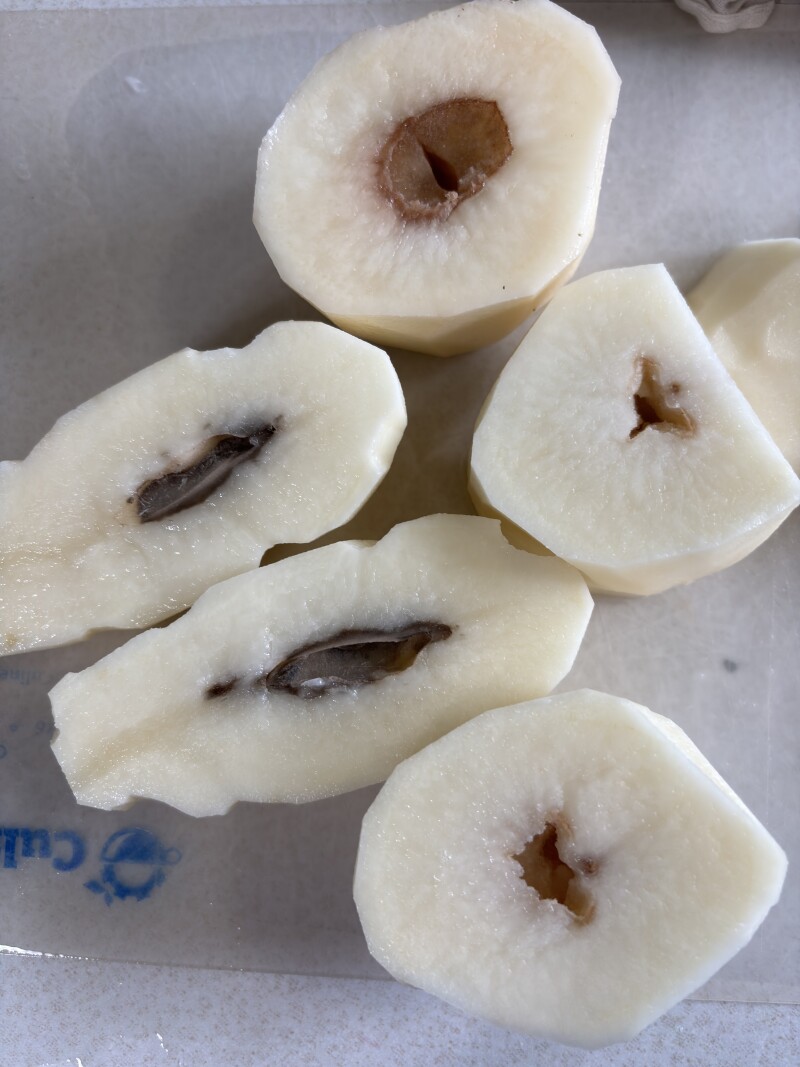Home gardeners are facing a new challenge this season as many report issues with their potato crops, particularly with a condition known as hollow heart disorder. This physiological disorder manifests as unsightly dark centers within the tubers, leaving many gardeners puzzled and disappointed.
Carin N., a gardener with a healthy crop of white potatoes, expressed concern after discovering that most of her potatoes were rotten upon cutting them open. Despite using certified seed potatoes from a trusted supplier and maintaining healthy plants throughout the summer, her efforts resulted in unexpected losses.
Understanding Hollow Heart Disorder
Hollow heart is not caused by a communicable disease but rather results from environmental factors affecting the potatoes. According to experts, this disorder occurs when tubers grow rapidly due to sudden changes in moisture or temperature, leading to internal gaps within the potato. Heavy rainfall or irrigation following a dry spell is a common culprit, as it can trigger a growth spurt that the tubers cannot sustain.
The phenomenon has likely existed as long as potatoes have been cultivated. North Dakota State University potato breeder humorously noted that hollow heart could even be seen as a desirable trait, providing a space for butter or sour cream—though he acknowledged that this was not a widely held view among gardeners.
While hollow heart can affect various potato varieties, it is particularly prevalent in white and russet types, with larger tubers being more susceptible.
Preventive Measures for Gardeners
To mitigate the risk of hollow heart, maintaining consistent soil moisture is crucial, especially during mid-summer. Mulching can be an effective strategy to help regulate moisture levels in the soil. Despite the disorder’s unsightliness, potatoes affected by hollow heart are still safe to eat after removing any discolored sections. However, it is important to note that this condition can shorten the storage life of the potatoes, as the internal gaps may become breeding grounds for rot.
Addressing Tree Care Concerns
In addition to issues with potatoes, gardeners are also seeking advice on protecting their fruit trees. Sam M. raised a question about wrapping apple tree trunks for winter protection, as her previous tree wraps no longer fit.
Wrapping tree trunks is an essential practice to prevent winter sunscald, which can leave trees vulnerable to black rot fungal cankers. Such injuries can significantly shorten the lifespan of apple trees, reducing their longevity from decades to as little as 10 or 20 years.
Gardeners have employed various creative solutions to shield tree trunks from harsh winter conditions. Some use burlap or flexible cardboard, while others apply diluted water-based white paint to reflect sunlight. A popular option among consumers is tree wrap, sold at garden centers, which can be easily applied around the trunk to provide needed protection.
Preparing Lawns for Winter
Another common concern among homeowners is the height of their lawn during the fall season. John S. inquired about the appropriate time to lower his lawn mowing height. Experts suggest that reducing the mowing height before winter can help minimize the risk of winter snow mold and reduce habitats for voles, which may create surface channels under snow cover.
While the current warm fall weather has kept grass actively growing, it is advisable to delay mowing until several hard freezes signal the onset of dormancy. The recommended mowing height before winter is approximately 2 inches. Some gardeners have even reported mowing their lawns as late as December 3, demonstrating the adaptability of lawn care practices.
For those with gardening or lawn care questions, Don Kinzler from NDSU Extension-Cass County is available to provide assistance. Questions that may benefit a broader audience are encouraged, and readers are invited to include their name and location for tailored advice.
As home gardening continues to evolve, understanding and addressing these challenges will be essential for maintaining healthy and productive gardens.







































































